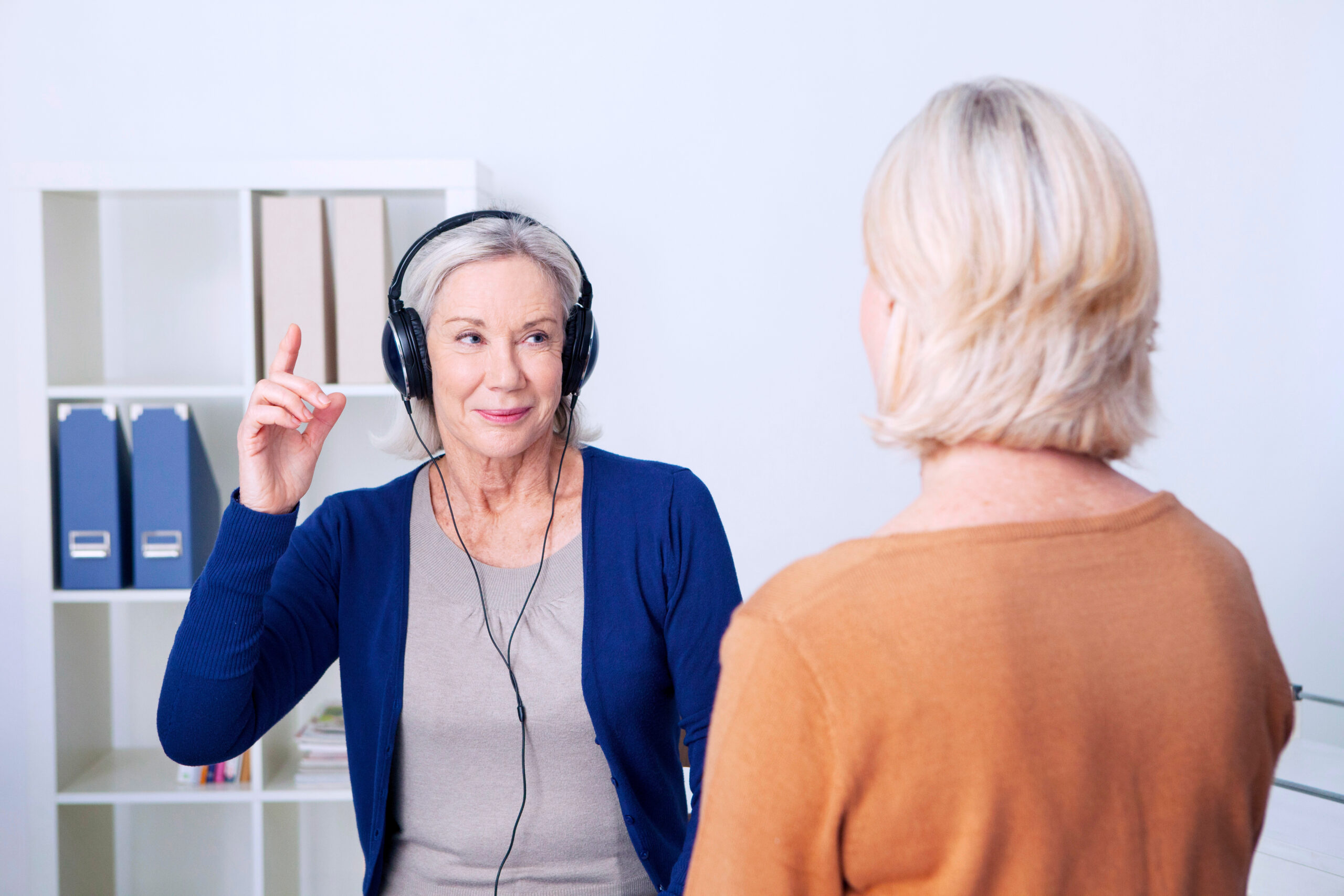Auditory decline is common among aging adults, and Johns Hopkins Medicine reports that 33% of adults over the age of 65 experience bilateral age-related hearing loss, also known as presbycusis. The gradual loss of perception of high-pitched sounds usually occurs first, while low-pitched sounds remain minimally affected. This loss of perception often stems from damage to the inner ear. Factors that can exacerbate hearing loss include family heritage, damage to hair cells from prolonged exposure to loud noises, and specific medications that affect inner ear structures. Despite these known factors, less is understood about the impact of auditory decline on speech perception and language competency, especially within the bilingual population. Previous research on bilingualism reports that individuals who are fluent in more than two languages are likely to have an increased cognitive reserve, which is the ability of the brain to resist damage by efficiently distributing functions across different areas of the brain. To deepen our understanding of auditory perception, researchers have been investigating the relationship between cognitive reserves, language competency, and auditory decline by comparing perception in older adult monolinguals and bilinguals. The exploration aims to bridge gaps in knowledge and provide insights into how bilingualism may affect auditory processing in aging individuals.
The risk of age-related hearing loss is higher among older adults.
Image Source: OLEKSANDRA TROIAN
In 1995, researchers first introduced the Perceptual Assimilation Model (PAM) to explain the theory that the first language an individual learns shapes their perception of sounds in non-native languages. While language acquisition establishes distinct speech categories in the brain, discrimination of sounds in each language category influences each other. A study conducted by researchers at the California State University-Los Angeles and A.T. Still University aimed to investigate vowel discrimination among bilingual and monolingual older adults. The study encompassed three participant groups: monolingual (English-speaking) older adults with presbycusis, monolingual (English-speaking) older adults without presbycusis, and bilingual (Spanish-English-speaking) older adults without presbycusis. Among the bilingual participants, English was their native language and Spanish was their second language that they learned after the age of six. Following various hearing tasks, the subjects completed a vowel discrimination task using nonsense syllable stimuli.
The study reported that monolinguals were able to better discriminate between vowel sounds, thereby confirming the principles outlined in the PAM model for second language acquisition. When an individual learns a second language, the first language influences how sounds in the second language are perceived, and speaking in a second language expands an individual’s cognitive load. In the case of the study, some vowels in Spanish sound more similar or different than English vowels, so the brain must work to recognize the distinction. On the other hand, monolinguals do not experience the additional cognitive load of extracting vowel differences across multiple languages, so monolingual participants both with and without hearing loss demonstrated a higher accuracy rate in the vowel discrimination task. Additionally, since participants in the bilingual group learned Spanish later in life, the researchers proposed that many relied on their English sound perception to analyze non-native sounds. Thus, the researchers concluded that language acquisition influences the ability to differentiate vowel sounds rather than hearing loss.
Studies examining the effects of bilingualism and monolingualism on language perception help inform interventions for age-related hearing loss. Additional studies are necessary to understand how older bilingual adults perceive sound differently.
Featured Image: RFBSIP










